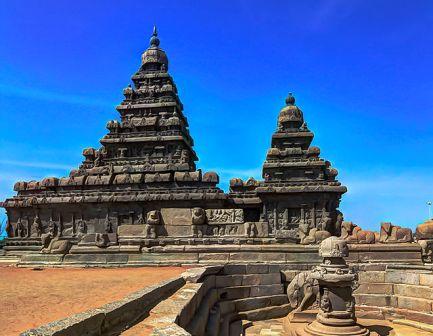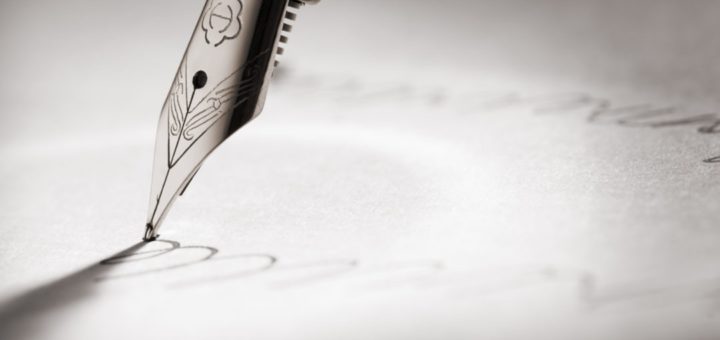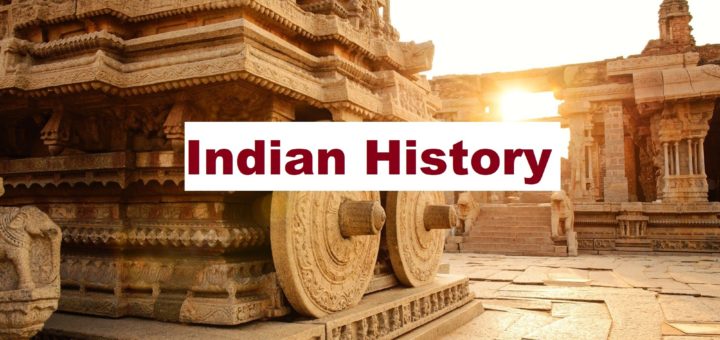Ancient India: Gupta and Post-Gupta – Only the main points from each chapter are compiled below as Quick Notes. Our advice is to first go through the respective NCERT History Text: Standard 6 and use this compilation then for quick revision.
New Empires and Kingdoms
Guptas
- Information about their history through inscriptions and coins.
- Changragupta was followed by Samudragupta.
- Samudragupta, Gupta ruler (1700 years ago, ie AD 300). Harisena was his court poet.
- Chandragupta, his father, was the first ruler of the Gupta dynasty to adopt the grand title of maharaj- adhiraja, a title that Samudragupta also used.
- “Prashasti” = inscription ‘in praise of’. Prashasti about Samudragupta was inscribed on the Asokan piller at Allahabad (Prayag).
- Four different kinds of rulers in different parts of India/Nepal/Srilanka either surrendered to him or made alliances. (Eg: Aryavartha, Dakshinapatha, gana sanghas etc).
- Main centers of Guptas: Prayag (Allahabad, UP), Ujjain (Avanti, MP) and Pataliputra (Patna, Bihar).
- Samudragupta’s son = Chandragupta II. Kalidasa and Aryabhata adorned his court. He overcame the last Sakas.
Harshavardhana & Harshacharita
- Information about their history through biographies.
- He belonged to Pushyabhuti Dynasty when Gupta dynasty was fading.
- His court poet, Banabhatta, wrote his biography, the Harshacharita, in Sanskrit.
- Xuan Zang, spent a lot of time at Harsha’s court and left a detailed account of what he saw.
- Harsha took over the kingdom of Kanauj, and then led an army against the ruler of Bengal.
- Although he was successful in the east, and conquered both Magadha and Bengal, he was not as successful elsewhere.
- He tried to cross the Narmada to march into the Deccan, but was stopped by a ruler belonging to the Chalukya dynasty, Pulakeshin II.
The Pallavas, Chalukyas and Pulakeshin
- The Pallavas and Chalukyas were the most important ruling dynasties in south India during this period.
- The kingdom of the Pallavas around their capital, Kanchipuram, to the Kaveri delta, while that of the Chalukyas [Aihole, the capital ] was centred around the Raichur Doab, between the rivers Krishna and Tungabhadra.
- The Pallavas and Chalukyas frequently raided one another’s lands which were prosperous ones.
- The best-known Chalukya ruler was Pulakeshin II. We know about him from a prashasti, composed by his court poet Ravikirti.
- Ultimately, both the Pallavas and the Chalukyas gave way to new rulers belonging to the Rashtrakuta and Chola dynasties.
- Land revenue remained important for these rulers, and the village remained the basic unit of administration
- There were military leaders who provided the king with troops whenever he needed them. These men were known as samantas.
- The inscriptions of the Pallavas mention a number of local assemblies. These included the sabha, which was an assembly of brahmin land owners.
- And the nagaram was an organisation of merchants.
- The Chinese pilgrim Fa Xian noticed the plight of those who were treated as untouchables by the high and mighty.
Buildings, Paintings and Books
- Iron pillar – during the time of Chandra – Gupta.
- Stupas (mound) – Relic casket may contain bodily remains of the Buddha or his followers or the things they used. Pradakshina patha was laid around the stupa. (Eg: Sanchi, Amaravathi)
- Cave temples.
- Rock cut temples.
- Hindu temples: Garbhagriha = place where the image of the chief diety was placed. Shikara = tower made on the top of garbhagriha to mark this out as a sacred place. Mandapa = hall where people could assemble.
- Examples of early temples : Bhitargaon, UP (AD 500) – made of baked brick and stone, Mahabalipuram – monolithic temples, Aihole Durga temple (AD 600).
- PS: Association of ivory worked paid for one the beautiful gateways at Sanchi.
- Jain monastery in Orissa.
- Paintings – Ajanata caves – Buddhist monks.
- Books – Silappadikaram (by Ilango Adikal, AD 200) and Manimekalai (by Sattanar, AD 600), Meghaduta (by Kalidasa).
- Puranas – were meant to be heard by everybody. Believed to be compiled by Vyasa.
- Jataka and Panchatantra stories



